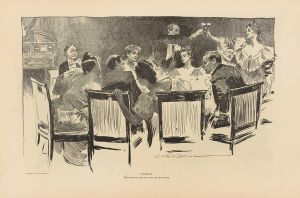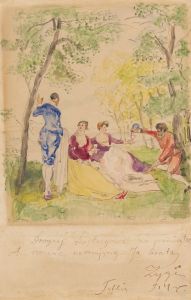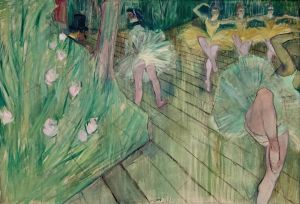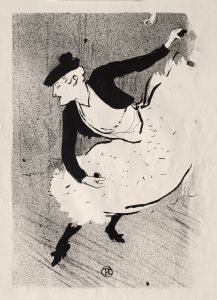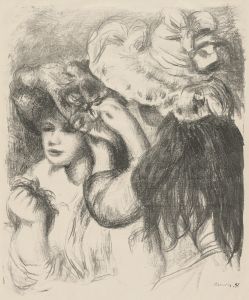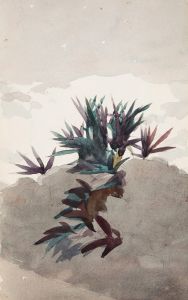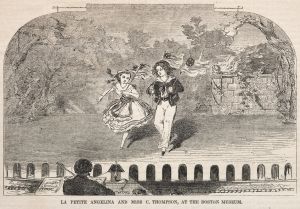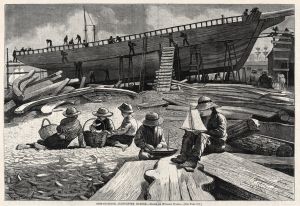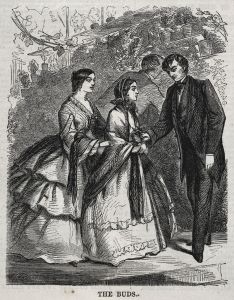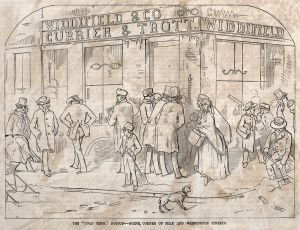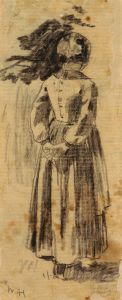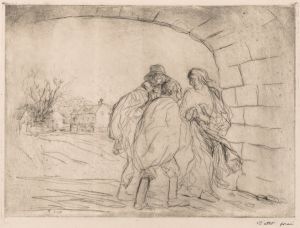
Seaside Sketches – A Clam-Bake
A hand-painted replica of Winslow Homer’s masterpiece Seaside Sketches – A Clam-Bake, meticulously crafted by professional artists to capture the true essence of the original. Each piece is created with museum-quality canvas and rare mineral pigments, carefully painted by experienced artists with delicate brushstrokes and rich, layered colors to perfectly recreate the texture of the original artwork. Unlike machine-printed reproductions, this hand-painted version brings the painting to life, infused with the artist’s emotions and skill in every stroke. Whether for personal collection or home decoration, it instantly elevates the artistic atmosphere of any space.
Winslow Homer, an American artist renowned for his marine subjects, created a series of works known as "Seaside Sketches" during the late 19th century. Among these works is "A Clam-Bake," a piece that reflects Homer's keen observation of coastal life and his ability to capture the essence of American leisure activities during this period.
Winslow Homer was born on February 24, 1836, in Boston, Massachusetts, and began his career as a commercial illustrator before transitioning to painting. His early work was characterized by its focus on the American Civil War, but he later became famous for his depictions of marine scenes and rural American life. Homer's time spent in coastal areas such as Gloucester, Massachusetts, and Prouts Neck, Maine, greatly influenced his artistic direction and subject matter.
"A Clam-Bake" is part of Homer's exploration of seaside activities, a theme that he frequently revisited. The painting captures a group of people gathered on a beach, engaged in the traditional New England activity of a clam bake. This communal event typically involves cooking clams and other seafood over a fire, often accompanied by socializing and enjoying the coastal environment. Homer's depiction of this scene is notable for its attention to detail and the way it conveys the relaxed, convivial atmosphere of the gathering.
Homer's technique in "A Clam-Bake" showcases his skillful use of watercolor, a medium he mastered and used extensively throughout his career. His watercolors are celebrated for their luminosity and fluidity, qualities that are evident in the way he renders the figures and the surrounding landscape. The composition of the painting is balanced, with the figures arranged in a way that draws the viewer's eye across the scene, creating a sense of movement and interaction.
The painting reflects the broader cultural context of the time, when seaside resorts and leisure activities were becoming increasingly popular among the American middle and upper classes. The late 19th century saw a rise in tourism and recreational travel, with coastal areas becoming favored destinations for those seeking respite from urban life. Homer's work captures this shift in American society, documenting the ways in which people engaged with the natural environment for relaxation and enjoyment.
Winslow Homer's "Seaside Sketches" series, including "A Clam-Bake," is significant not only for its artistic merit but also for its historical value. These works provide insight into the social customs and leisure activities of the time, offering a window into the past that continues to resonate with audiences today. Homer's ability to depict the interplay between humans and nature remains a defining characteristic of his oeuvre, solidifying his legacy as one of America's foremost artists.
In summary, "A Clam-Bake" by Winslow Homer is a quintessential example of the artist's skill in capturing the essence of American coastal life. Through his masterful use of watercolor and keen observational skills, Homer presents a scene that is both historically informative and artistically compelling, reflecting the cultural dynamics of late 19th-century America.






